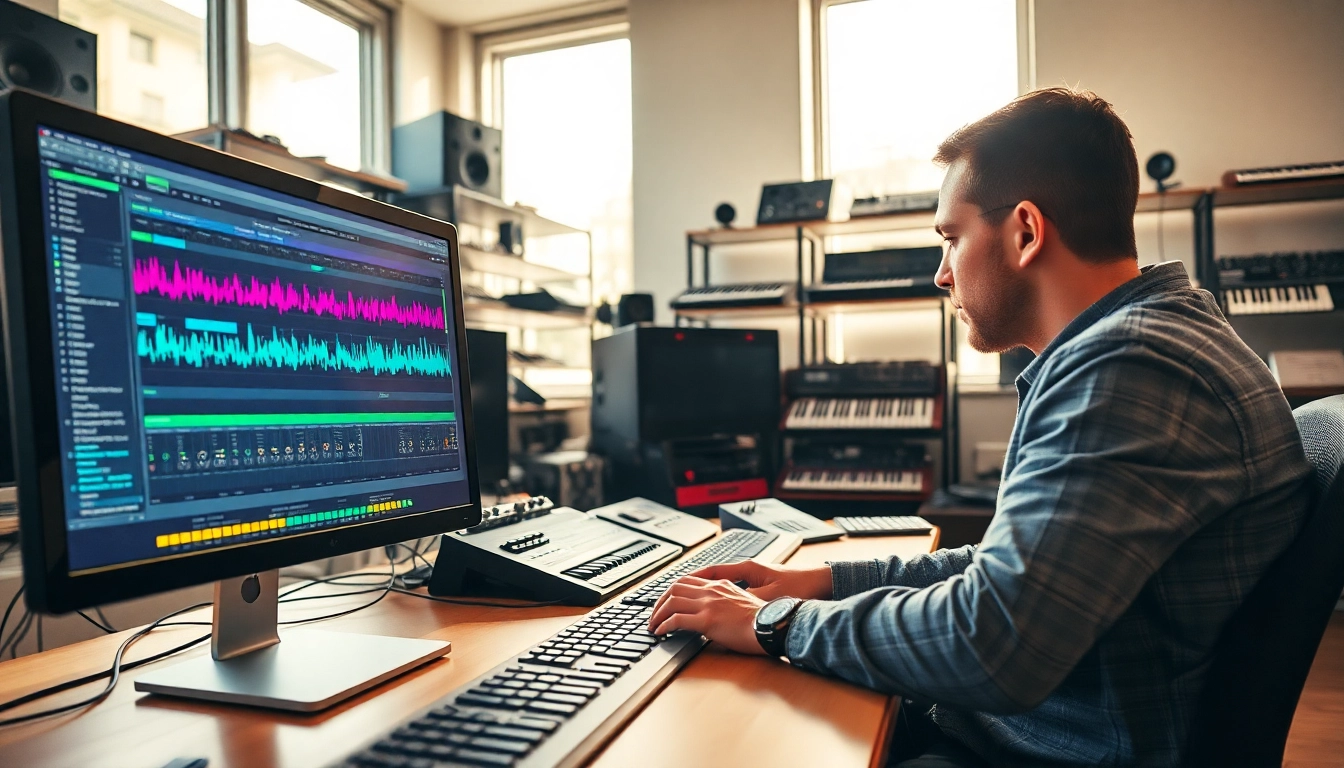Understanding Drum and Bass Presets
What Are Drum and Bass Presets?
In the realm of electronic music production, presets act as pre-configured settings designed to streamline the music creation process. Specifically, Drum and Bass presets are tailored to produce the rich and diverse sounds that characterize the drum and bass genre. These presets are typically saved settings for synthesizers, effect processors, or virtual instruments, allowing producers to quickly access complex sound designs without starting from scratch. Each preset can include a variety of parameters, such as oscillator settings, filter types, modulation envelopes, and effects chain configurations, making it easier to achieve the desired sonic result in a matter of seconds.
The Role of Drum and Bass Presets in Music Production
Drum and bass music is known for its fast tempo, heavy basslines, and intricate percussion patterns. Within this genre, presets play a crucial role by providing ready-made sounds that maintain its signature intensity. Producers leverage these presets to focus more on their creative process rather than getting bogged down with the technical aspects of sound creation. By using professionally crafted presets, artists can ensure quality sounds that fit perfectly within the drum and bass context, offering a strong foundation to build their tracks upon. The use of presets can also facilitate collaboration by providing a uniform sound palette that can easily be shared among multiple producers working on the same project.
Common Synths Used for Drum and Bass Presets
Several synthesizers are favored by drum and bass producers for creating presets, most notably:
- Serum: Renowned for its high-quality wavetable synthesis, Serum is a staple in the drum and bass community. Its visual interface and robust modulation capabilities make it an ideal tool for crafting complex bass sounds and intricate leads.
- Massive: This synthesizer is well-known for its roaring basslines and aggressive sound design, making it a go-to choice for many genres, including drum and bass.
- FM8: FM synthesis allows producers to create unique timbres and textures that stand out within the crowded mix of drum and bass tracks, making FM8 a valuable asset.
- Vital: A relatively newer entrant, Vital offers an intuitive interface paired with powerful sound design capabilities, making it increasingly popular among modern producers.
Choosing the Right Tools for Drum and Bass Production
Essential Software for Creating Drum and Bass Presets
The foundation of any electronic music production lies in the software utilized during the creation process. Several digital audio workstations (DAWs) are optimally set up for drum and bass music production:
- Ableton Live: With its session view designed for intuitive live performances and composition, Ableton Live is perfect for creating and manipulating drum patterns and basslines.
- FL Studio: Known for its user-friendly interface and powerful pattern sequencer, FL Studio is an excellent choice for pattern-based production typical in drum and bass.
- Logic Pro X: This DAW combines powerful MIDI capabilities with a vast library of built-in sounds and effects, accommodating intricate drum and bass productions with ease.
Hardware Options for Superior Sound Design
While software is critical, hardware synthesizers can add depth and character that software presets cannot always capture. Popular hardware options within the community include:
- Korg Minilogue: This analog synth produces rich sounds that are particularly effective for deep basslines and lush pads.
- Roland TR-8S: A modern take on classic drum machines, the TR-8S offers extensive drum sounds that can enhance rhythm sections significantly.
- Moog Sub 37: Its warm analog sound and powerful modulation capabilities make it a favorite for bass-heavy applications.
Best Practices for Sample Selection in Drum and Bass
When selecting samples for drum and bass production, several factors must be considered to ensure quality and resonance with the genre’s aesthetic:
- Kicks: Look for kicks that are punchy and can cut through the mix. Samples with a strong transient response will help drive the rhythm forward.
- Snares: A crisp snare sound is essential for maintaining high energy. Layering snares can add depth and variation to the overall sound.
- Bass Samples: Choose samples that have a deep and rich low end, suitable for the genre’s characteristic basslines.
Techniques for Designing Drum and Bass Presets
Layering Sounds for Richer Drum and Bass Presets
Layering is a powerful technique in sound design that allows producers to create complex and textured sounds. For drum and bass, layering multiple sounds can achieve a fuller and more dynamic sonic landscape. Here are some tips for effective layering:
- Complementary Sounds: Ensure that the sounds you are layering complement each other. For instance, stacking a soft sub-bass under a punchy bass can produce a rich and powerful result.
- Panning Techniques: To create width, pan different sounds slightly left and right. This technique helps to create a more immersive listening experience.
- Dynamic Processing: Use compression to glue your layers together. This keeps the sound cohesive and ensures that the layers interact well during playback.
Using Effects to Enhance Your Drum and Bass Presets
Effects are crucial for transforming basic sounds into polished, professional presets. A few common effects techniques include:
- Reverb: Apply reverb to create a sense of space, but be cautious not to overdo it, as this can muddy the mix.
- Delay: Utilizing syncopated delays can add rhythmic elements to your sounds, creating a more engaging listening experience.
- Distortion: Light distortion can add warmth and character to bass sounds, ensuring they sit well within the mix.
Creating Movement and Depth in Drum and Bass Presets
Movement within a sound can keep the listener engaged. There are several techniques for adding movement to your drum and bass presets:
- Modulation: By applying modulation to parameters such as filter cutoff or pitch, you can introduce dynamic changes to a sound over time.
- Automation: Automating parameters within your DAW can create variations that evolve throughout the track, enhancing its overall emotional impact.
- Layer Modulation: Layer different sounds with varied modulations to maintain excitement and interest throughout your track.
Free Resources for Drum and Bass Presets
Where to Find Quality Free Drum and Bass Presets
While there are many premium sounds available, several platforms offer quality free Drum and Bass presets. Some reputable resources include:
- Royalty-Free Sample Websites: Websites like Loopmasters and Splice often offer free starter packs that contain valuable presets suitable for drum and bass.
- SoundCloud and YouTube: Many producers share free presets via their channels. Be sure to check the description for any links to download.
- Facebook Groups and Forums: Connecting with other producers can reveal hidden gems, including free packs shared within community groups.
Community Contributions and Open-Source Options
Many skilled producers contribute to the community by sharing their sounds and presets. Platforms such as GitHub now host open-source audio tools and presets that users can freely modify and use in their projects. Engaging with these resources not only provides excellent learning opportunities but also helps foster a collaborative culture within the drum and bass community.
Exploring Online Forums for Drum and Bass Presets
Drum and bass forums, such as Reddit, contain valuable threads where producers share presets. Participating in these forums can provide access to exclusive resources, utility tips, and vibrant discussions that can enhance your production skills.
Evaluating the Impact of Your Drum and Bass Presets
Listening Tests: Getting Feedback on Your Drum and Bass Presets
After creating presets, it is essential to gather feedback. Listening tests can provide insights into how your sounds interact in a mix and whether they meet the expectations for the genre. Ask fellow producers for their thoughts or utilize online platforms to have a broader audience listen to your work.
Using Metrics to Measure Performance in Tracks
Analyzing the performance of your drum and bass tracks can shed light on how effective your presets are. Metrics such as user engagement on streaming platforms, placement in playlists, and listener feedback can provide a clearer picture of how your sounds resonate. Tracking which sounds garner positive responses helps inform future production, ensuring a continuous development cycle.
Continual Improvement and Iteration of Drum and Bass Presets
The music industry is constantly changing, and producers must adapt their sound accordingly. Regularly revisiting and iterating on presets is essential, as it allows you to refine your palette and stay aligned with contemporary trends in drum and bass. Keeping an open mind and being receptive to new techniques can lead to groundbreaking sounds that push the boundaries of your creativity.



